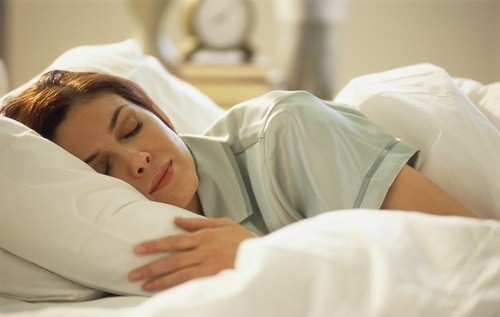After the birth, which ended successfully, each mother feels happy. Throughout the body, as if passes an extraordinary sense of lightness and freedom. All is well and you have already seen your beautiful and healthy baby.
However, soon euphoria gives way to fatigue, you need a good rest along with a sound and deep sleep.
On the first day after birth, the uterus begins to contract several times stronger, the bleeding practically stops, as the vessels are closed by blood clots. At this time, the puerperal is necessarily monitored by a doctor. In the following hours, the uterus begins to become smaller in size, its walls become thicker, the lumen narrows.
Immediately after childbirth, a hand can pass through the pharynx into the uterus, only two fingers can be inserted in a day, and only one finger in a day. Three weeks later, the pharynx is completely closed.
Features of the postpartum period
The peculiarities of the postpartum period can be considered the fact that the inner side of the uterus is similar to a wound, since in the first day after birth it contains blood. It turns out that all protective barriers are completely destroyed. Lochia (discharge) has an alkaline reaction, so if you do not take any safety measures, serious consequences of childbirth can occur. This can be an inflammatory process that occurs in the genitals, or other equally unpleasant problems.
The consequences after childbirth are different for every woman. However, for all, the subsequent reverse development of the uterus occurs gradually, at a slow pace. It reaches its usual mass (80g) only after six weeks. Also, lochia changes slowly. The first few days they are bloody, the next day they are brown, after the tenth day they become, as they were before birth or completely stop.
Another feature of the postpartum period can be considered a change in the functioning of the endocrine system. Steroid hormones are rapidly eliminated from the female body, after which the pituitary gland begins to produce lactogenic hormone. Due to this effect, on the fourth day after delivery, blood flow to the mammary glands increases. These processes are considered preparation for lactation.
The first days after childbirth, the intestines do not perform so well. Its tone is significantly weakened, digestion becomes slower, there is a complete lack of stool. You will have to empty the intestines using an enema or laxatives. Also, the first days you need to follow a special simple diet.

What changes after childbirth?
The female body after childbirth undergoes many changes. Most of them are associated not only with the internal state, but also with the external. During pregnancy, a large number of growth hormones are released, as a result of which hair and nails begin to grow faster. However, after giving birth, a completely different situation will be observed. Hair will begin to fall out in small quantities, they will lose their shine. Nails will become brittle and drier. Of course, after a few months, all processes in the body will return to normal, and hair with nails will gradually become the same as they were before pregnancy.
Other changes after childbirth are considered stretch marks on the skin. This is an important problem that can be solved only with the use of additional tools or exercises. Stretch marks appear on the hips and buttocks. It also happens that in some women in childbirth they disappear shortly after the birth or become less pronounced. You should not get upset because of this, because life goes on, all the stretch marks that are now, after childbirth will gradually come to naught, and you just need to cope with these problems.
Menstruation after childbirth
Most women are concerned about how and when the menstrual cycle will be restored. In most mothers, it occurs 40 days after birth. Lactating women do not have them for a long time (several months). Here you can’t talk about the norm or the exact timing of recovery, since each woman will have individual ones.
This is due to lactation. The thing is that a woman’s body after birth begins to produce prolactin. It inhibits the formation and functioning of hormones in the ovaries, so the egg does not mature in due time. If the baby is fully breastfed, then the mother’s menstrual cycle will be restored only after the introduction of a small feeding. In the case when the child is on mixed feeding, that is, there is an alternation of feeding with complementary foods and breast milk, then the menstruation will be fully restored after two, three months. During only artificial feeding, menstruation is restored within a few weeks after childbirth.
In general, factors such as:
- The course of pregnancy and how the birth took place;
- Mom’s age and condition;
- Compliance with the correct regimen of the day (full sleep and nutrition);
- The presence of chronic diseases;
- Mental condition.
More on the menstrual cycle after childbirth →
Genital Restoration Process
Immediately after birth, the vagina will be swollen. This is a normal situation that goes away after a few days. This natural process may be accompanied by small bleeding. Pain may be felt, slight retraction. Many puerperas note that the sensitivity of the vagina changes.
This is manifested in the fact that a woman does not feel anything during intimacy. However, do not panic about this. This is only a temporary phenomenon, which is due to sagging walls of the intimate organs. Recovery will take a small amount of time, using and performing special exercises, it will be even faster.

The state of the cardiovascular system
The health of a woman after childbirth is considered unstable, but it is restored over time. Changes are observed in absolutely everything, the same applies to the cardiovascular system. Immediately to poor health and fatigue, an increased volume of blood circulating through the body is added. Not uncommon is the increase in heart rate. Recovery of this system will occur within 3-4 weeks.
It is known that initially there is heavy bleeding. For this reason, the coagulation system works intensively. Because of it, the number of platelets in the blood increases significantly in the first two weeks. Other changes in the cardiovascular system are not observed.
The bladder and its activities
The postpartum state of a woman cannot be called satisfactory, it affects even the urethra. During pregnancy, she works as expected. After this, small changes occur that affect poor urination. This is usually very painful. This is explained by the fact that urine gets on abrasions and wounds formed during childbirth. Because of this, a strong burning sensation begins.
It often happens that the puerpera is unable to control urination. She does not feel pressure and urge. The sensitivity of the bladder decreases. After a short period of time, as soon as all the cracks heal, the work of the urethra system will return to normal.
Constipation
The first month after birth, constipation is not ruled out. As a rule, according to the method of occurrence, two types are distinguished:
- The first species is atonic. During this, the intestinal tone decreases greatly. It becomes lethargic and unproductive. This type of constipation most often occurs due to muscle weakness, manifested after cesarean section. Such a reaction is considered a normal response to an intervention. During atonic constipation, aching pains appear in the abdominal region. There is a feeling that the intestines are full, nausea begins;
- The second type is spastic constipation. It occurs when the intestinal tone is increased, and peristalsis becomes unproductive because of this. This form is caused by paroxysmal pain. Nausea, sheep’s feces and irritability are the main symptoms.
The condition of a woman immediately after childbirth can also be complicated by hemorrhoids. This disease is a varicose vein located in the rectum, more precisely in its lower section. Its aggravation after childbirth depends on the failure of the entire intestinal system, as well as on intestinal tone. It manifests itself in several forms: acute and chronic.
The first type develops rapidly, and its symptoms include constant itching, a burning sensation. Because of this, a delay in the stool begins. All symptoms develop almost imperceptibly for the puerpera, however, you need to deal with them already at first. If this disease occurs, you should immediately consult a doctor for consultation and examination.
Breast and her condition
During pregnancy, the body is completely rebuilt and changes. Female breasts are no exception. After childbirth, it changes greatly in size: it begins to swell, becomes larger, nipples darken. Sometimes painful and unpleasant sensations appear. This is due to the beginning of the functioning of the mammary glands.
Women after childbirth are upset because their breast shape changes. It sags, stretch marks and cracks appear on it. However, do not worry, because most of these problems will disappear on their own after a while, and the remaining ones can be solved independently.
Female breasts become more sensitive and tender. For this reason, it is worth choosing special underwear for her, it is better to observe hygiene measures, often massage. This will help to avoid coarsening and hardening. All movements should be soft and smooth.
Postpartum discharge
After childbirth, puerperas from the genitals begin to receive copious discharge, which has the name – suckers. At first, they have a reddish color, as they stand out together with blood. After a while, their color changes, turns white, and after eight weeks, the discharge practically stops. During the allocation, you will need to use disposable pads and underpants.
You can buy them at a pharmacy or other specialty store. It is better to purchase gaskets and underpants from well-known companies to ensure product quality. These hygiene products should be soft, comfortable, and in addition should be well absorbed.
General recommendations for the postpartum period
The postpartum period is the time from the end of labor to the complete completion of reverse recovery changes. At this time, you should adhere to general recommendations. With their help, you can quickly recover, continue your usual life and conduct proper care for the baby.
Most women wonder what to do after giving birth. After giving birth, you need to try to return your body to normal life as soon as possible. This will help not only you, but also your child, as he needs constant care and attention.
To quickly cleanse the body:
- Do not eat anything fatty or smoked after childbirth;
- Starting from the second day, you can eat simple home-cooked food, eliminate too fat salads, fried or heavy foods;
- Consume juices daily;
- Monitor your stool daily.
If after birth there are cracks in the vagina, then you should adhere to the following recommendations:
- Do not sit on a hard surface until they heal! If you need to sit down, you need to put a folded pillow under you;
- After the toilet, you must wash yourself with the use of baby soap;
- Using hydrogen peroxide, treat the perineum several times a day;
- Three times a day, insert a swab previously soaked in chamomile infusion into the vagina.
In the first weeks it is not recommended to take hot baths (enough shower), swim in ponds, make intimacy.
Life after childbirth and the postpartum period are considered the most difficult in the life of every woman. For a quick recovery and return to normal, you will need to follow the recommendations described above. With them, you can speed up the reverse process of changes in the body, quickly recover. In the case of at least slight suspicions of poor condition, you should immediately consult a doctor!



